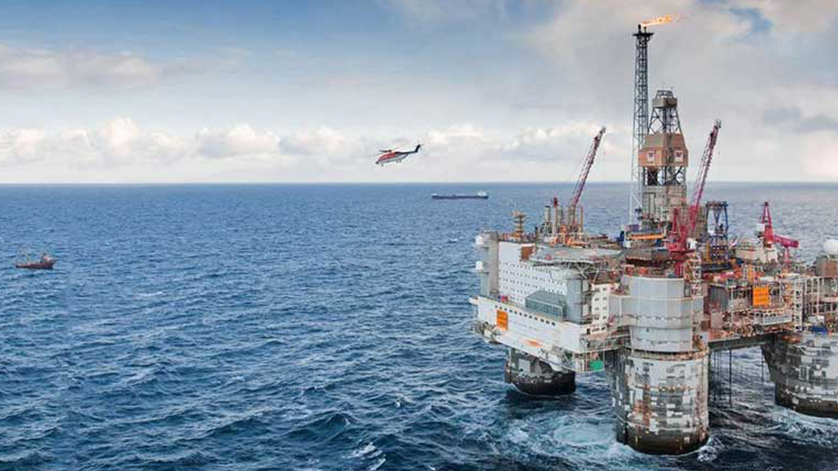Wireless Technology - Bringing The Industry Together

By: Ross MacLeod, Business Development Director, Ashtead Technology
Wireless technology has transformed the way we live—yet today, most communications from oil and gas platforms and vessels to shore still depend on expensive satellite links and capturing data from these remote locations is still a major challenge for the industry.
The potential benefits of wireless systems for offshore applications are clear. Long-range radio modems and gateways have enabled people to communicate in even the world’s most challenging, far-flung seas.
Leading provider of subsea equipment rental, sales, and services to the offshore industry, Ashtead Technology recently secured a worldwide agreement with Belgium-based nCentric to supply seamless video streaming and data transmissions for large-scale, wireless dynamic mesh networks from its offices across the globe.
The nCentric technology can be used to monitor offshore operations, increase communication, and relay high-definition footage from Remotely Operated Vehicles (ROVs) in real-time. The system can be configured remotely and monitored from an onshore location, reducing the number of people required offshore and limiting downtime.
The technology was a key component in the clean-up operation following the Deepwater Horizon disaster in
- The U.S Government identified that increased visibility and enhanced communication were needed to monitor the operation. The fast-track nature of the project required an extremely quick turnaround.
Utilising nCentric’s communication node on board eight vessels, crews were able to stream more than 10 live ROV video images to the offshore command centre as well as between each other and create a reliable communication link.
The wireless mesh network also accommodated ongoing vessel movements and possible obstructions, whilst tolerating interference from multiple frequencies without affecting its performance.
“As companies venture into increasingly remote and isolated locations, communication lifelines are vital to managing fleet and vessel operations as well as maintaining crew safety.”
Some oil and gas hubs are home to hundreds of platforms, transfer sites and drilling rigs, many of which are unmanned and unmonitored. Then there are the countless vessels in the surrounding area. The ability to reliably network these assets represents a substantial advantage in terms of safety and incident management.
The need to implement secure, fast and reliable communications systems to monitor activity and track production is a vital part of any offshore operation. Mesh networking solutions have been built to withstand challenging conditions encountered in oil and gas, military and renewables, with minimal maintenance required.
A wireless mesh network allows the industry to connect and collaborate on a project, bringing together all parties involved to exchange real-time IP data and video images across large, hard-toreach geographical areas. The technology can also be used for multi vessel projects where data are required to be shared between all assets.
Historically, the range and availability of sensors and transmitters was limited and questions were raised by the industry over the accuracy and reliability of the data exchanged. However, over time, technological advances have led to many of these problems being largely resolved due to enhanced functionality, security, and the introduction of industry set standards.
The technology is self-healing, which means that if a link is lost or out of range then the data seamlessly redirects itself to eliminate the risk of a communication drop out.
This means that engineers can now monitor and assist offshore operations as if they were onsite. The network is highly responsive, ensuring voice, video and data can quickly and securely flow between all field coverage nodes in the network.
By providing seamless mobility, critical applications like VoIP, video streaming and data, transmissions are not interrupted as they move through the network. The technology can specifically address the overall communication requirements of platforms, vessels and other assets operating in remote areas, providing high bandwidth with extremely low latency communication solutions, delivering more efficient and safer operations.
As the world’s energy demand continues to grow and the industry faces numerous challenges of greater complexity, it is important that companies increase both the number of discoveries and the efficiency of their operations. By transitioning to the digital oilfield and utilising seamless, high-bandwidth communication services, the industry can revolutionise the way it carries out projects and create opportunities to make better decisions faster.
Today’s technology will only get more sophisticated as time goes on. The range of applications supported by wireless technology is virtually unlimited, from remote monitoring of platforms and equipment to seamless data transfer and video security.
The industry relies on anywhere, anytime communications and amidst the backdrop of tough operating conditions, technology that can enhance the speed and safety of projects is key. The need for an infrastructure that allows all assets, whether fixed or in motion, to connect and communicate in real-time, at all times, is growing. This means that the industry must be open to adopt new or changing network technologies to increase productivity and communicate without interference, interruption, or manual intervention.

NCentric Nova Node (break-out box).
NCentric’s Nova Node is different to existing systems currently on the market. It features four independent high-powered 5-GHz radios and can be linked with iridium 3G, 4G, and LTE modems for reliable remote connectivity.
To provide 360° coverage without sacrificing range or bandwidth, nCentric developed a unique antenna array and now offers a 900MHz module to extend the wireless range up to 20km.
For extremely cold conditions an internal heating element can be added to prevent ice build-up in and around the node.
It also includes a GPS tracking device so vessels and other assets can be located at any time, no matter where they are in the world.

